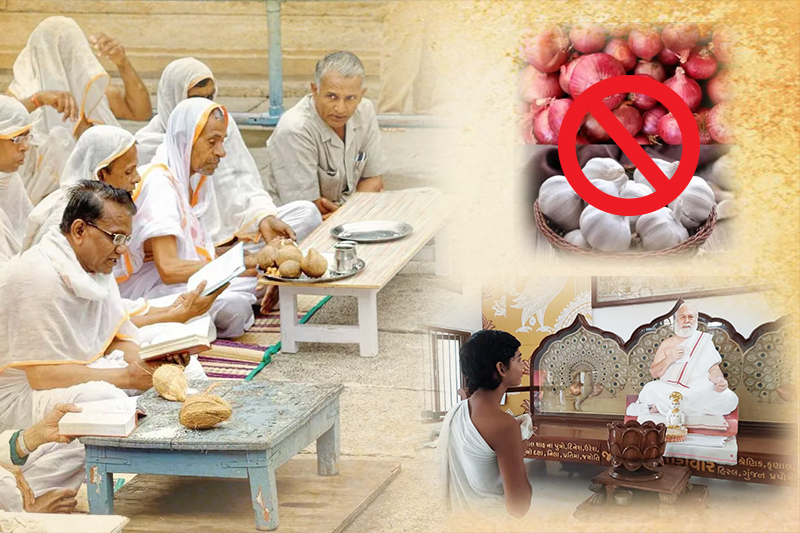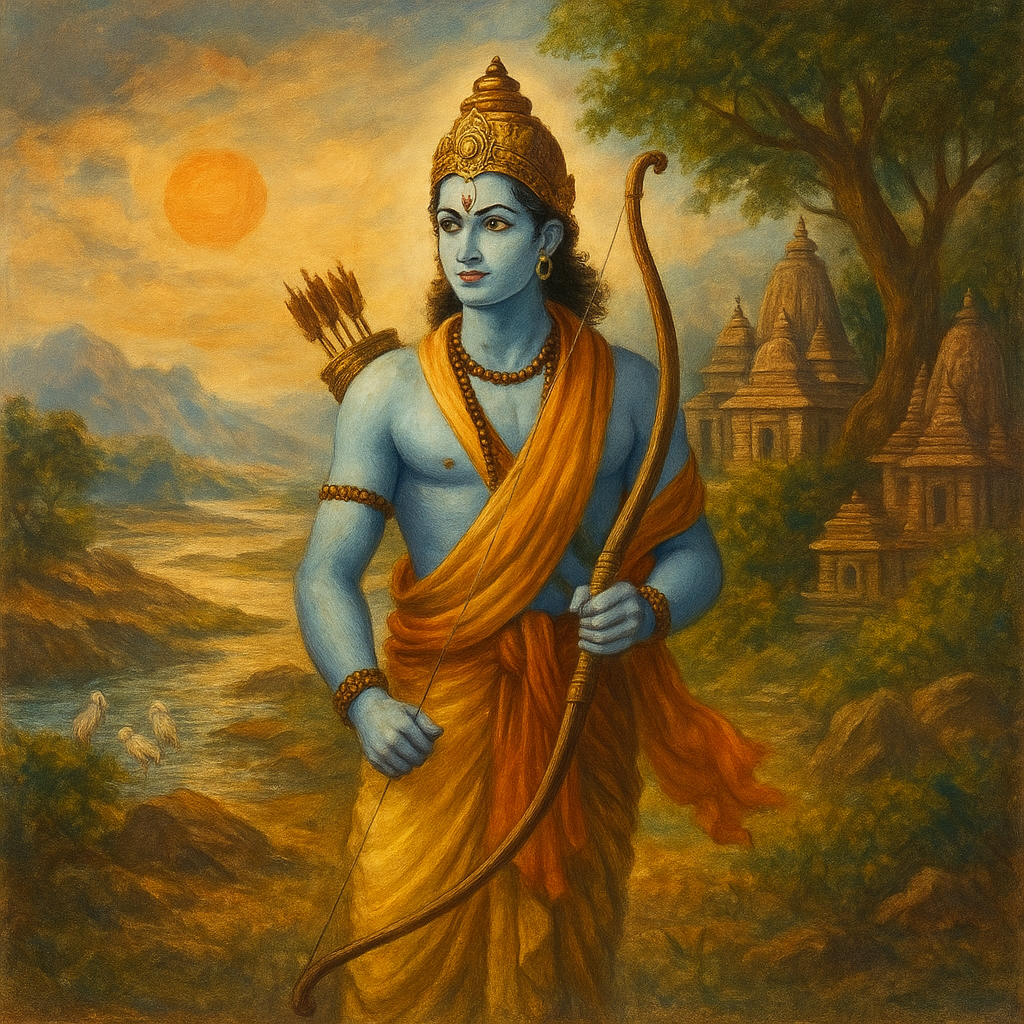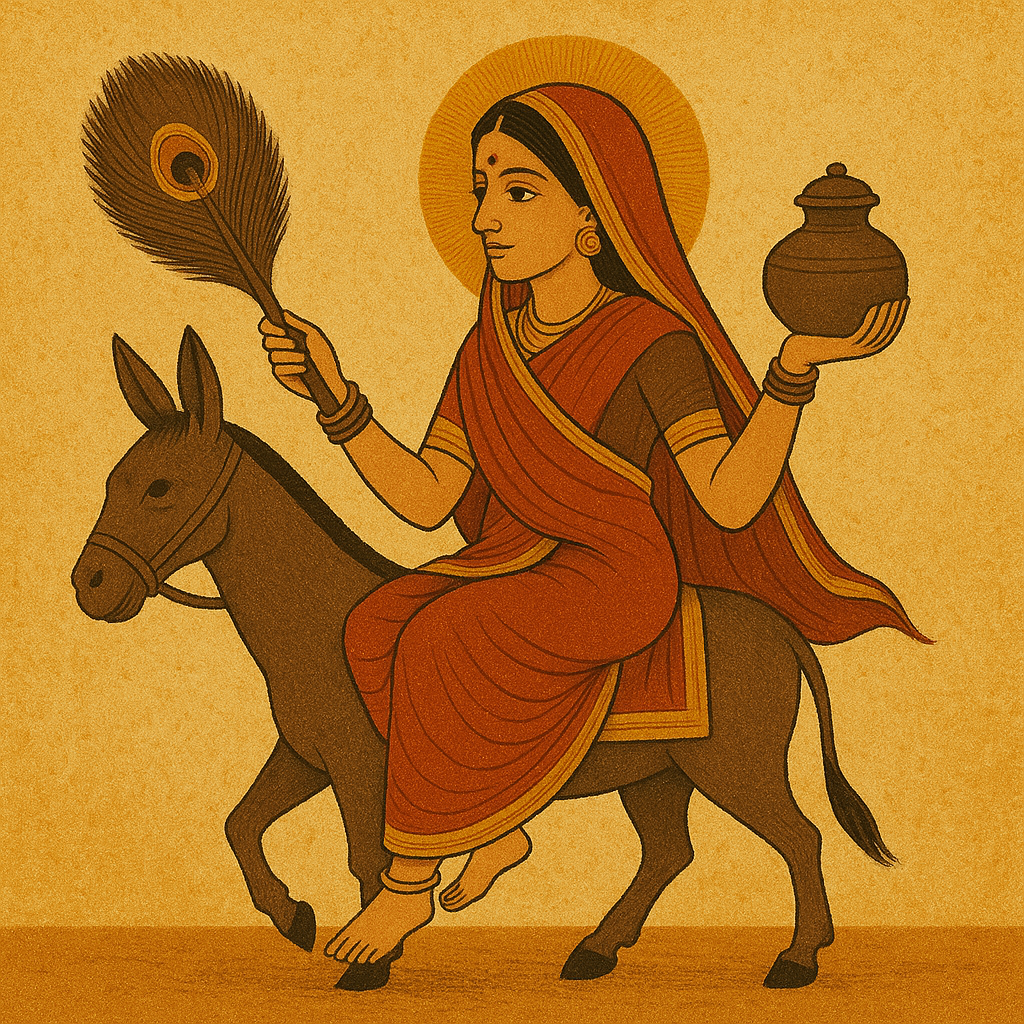
Paryushana, the most significant Jain religious festival of the year, literally means 'abiding' or 'coming together.' It consists of eight to ten days of intensive study, reflection, and purification. It culminates on the final day with confession and a request for forgiveness.
It begins on the 12th day of the waning moon in Bhadrapad and ends on the 4th day of the waxing moon. Paryushan not only illuminates the body but also awakens the mind. It is a ritual of self-purification, forgiveness, compassion and salvation.
The Paryushan festival is related with renunciation, austerity, study of the scriptures, chanting holy hymns, meditation and expressing devotion to the Parmatma.
Paryushan Date, Time, and Muhurat 2026
This year, Paryushan begins on Tuesday, 8 September 2026, and ends on Tuesday, 15 September 2026.
Paryushan is observed for eight days by the Shwetambaras and for ten days by the Digambaras, marking a sacred period of introspection, forgiveness, and spiritual renewal.
Paryushan Mahaparva Muhurat
- Start: Tuesday, 8 September 2026 – 5:45 AM
- End: Tuesday, 15 September 2026 – 11:45 PM
Paryushan Meaning

According to Digambaras, the eight-day Jain festival is referred to as Das Lakshana Dharma, while Shwetambars refer to it as Paryushan. Some ascetics believe that it is derived from “Pari” which means all and “Ushan” which means to burn or to shed. Hence, “Paryushan” refers to shedding all bad karmas. Another theory suggests that Paryushan has been derived from the word upshamana which means “to suppress” anger, greed, ego and deceit.
Significance of Paryushan

The three jewels of Jainism (Ratnatraya) namely Samyagdarshana (right faith), Samyagjnana (right knowledge) and Samyakcharitra (right conduct) are important facets for spiritual liberation.
Paryushan stands for some of the most important practices like non-violence (Ahimsa), self-discipline (Sanyam), fasting penance (Tapah), study of the scriptures (Swadhyaya), introspection (Pratikraman) and repentance (Prayaschitta).
In the Jain scripture, Das Dharma, or the ten righteous virtues such as Uttam Kshama (forbearance), Uttam Mardava (supreme modesty), Uttam Aarjava (straight forwardness), Uttam Satya (truth), Uttam Shoch (purity), Uttam Tap (austerity), Uttam Sanyam (supreme restraint), Uttam Aakinchanya (non-attachment), Uttam Tyaga (renunciation) and Uttam Brahmcharya (supreme celibacy) have been mentioned.
Why is Paryushan Celebrated?

The history of Paryushan Mahaparva dates back approximately 2500 years. It is stated in the holy scriptures that Lord Mahavir started observing Paryushan on Shula Panchami in the month of Bhadra.
During the monsoon, the Jain monks were required to stop traveling and seek refuge in a single location for an extended period of time. Given that the rainy season lasts four months, Paryushan is also known as Chaturmasa.
Since ancient times, the majority of the population of India has been engaged in agriculture-related activities. Consequently, they had several months of free time during the monsoon. In addition, rain made it difficult for them to relocate. In order to seek refuge, the monks would knowingly or unknowingly have to kill some insects. Thus began the practice of self-purification via spiritual guidance.
The word “Jainism” is derived from the word “conquer,” which refers to fighting against one’s passions and pleasures using self-restraint and control. The main principles of Jainism are non-violence, non-absolutism and non-possessiveness. As the world progressed and lifestyles became more complex, people moved from remote villages to cities, where they were presented with an abundance of temptations and luxuries.
As a result, the fundamental doctrines of Jainism began to wane. Thus, the religious rituals performed by Jain monks during Chatursma evolved into a festival observed by the entire Jain community.
What should one eat on Paryushan?
During Paryushan, simple dishes are prepared. Although it is commonly known that Jain cuisine is devoid of garlic, onion, and potatoes, Jains also avoid leafy green vegetables and fruits during this time. Milk and dairy products, rice, lentils, cereals, and pulses are the most consumed. In addition to the traditional dal chawal, rotis, gatte ki sabzi, dry methi sabzi, methi thepla, paanch kuta, boondi raita, gatte ka pulav, and coconut chutney are prepared. Laasi, rice kheer, and aate ka halwa are desserts that are prepared.
What to do in Paryushan?

Jains observe Atthai Tap fasting for eight days and take a vow of Paushadh vrat (to live like an ascetic). During Paryushan Parv, monks read out and explain in detail the Kalpasutra, the holy scripture of the Jains. The 1250 fundamental Sutras are listened to by Jains, along with Samvatsarik Pratikraman (returning to oneself) and the annual atonement for seeking forgiveness. The Kalpa Stra contains biographies of the Jain Tirthankaras, including those of Parshvanath and Lord Mahavir. The Kalpa Sutra was composed approximately 993 years after Lord Mahavir's Nirvana.
On the first day of Paryushan, individuals focus on clearing the mind of negative thoughts. The second day inspires people to donate to a Jain temple or important social causes. The third day focuses on connecting the mind to the soul by practicing meditation for the purpose of enlightenment.
On the fourth day, Jains believe that they would receive good wishes and protection from the Goddess Laxmi by conducting a puja and offering sweets. The fifth day is known as “The Day of the Kalpasutra” when people celebrate Lord Mahavir’s birth. The sixth and seventh day represent tolerance and perseverance.
The eighth and final day is known as Samvatsari which translates to the “Gateway of Salvation.” It is also celebrated as International Forgiveness Day. The day marks the beginning of the Jain New Year.
How to do Paryushan fasting?

The span of the fast can last from a day upto 10 days, 30 days or even more. In both Digambara and Shwetambara sect, śrāvakas (laymen) observe a fast by having boiled water while some people eat just once a day.
Sunlight is a natural disinfectant. Thus, the level of bacteria in the atmosphere is less during the daytime than at night. Therefore, Jains avoid eating between dusk and dawn (between Sunrise & Sunset) and avoid root vegetables such as onions and garlic.
By eating before sunset and avoiding vegetables that grow underground, Jains practice amari pravartan (non-violence). During this holy period, Jains spend their evenings at local temples as chaitya paripati is one of the main principles. The purpose of Paryushan is to show self-control during the day.
History & Ideals of Paryushan Parva
A king named Dhruvsen lived in Anandpur (at present Vadnagar) in Gujarat. His son died suddenly due to snake bite and all remedies to recover him had failed. The king was quite worried. So, the guidance of Acharya Shri Kalaksuriji Maharaj was seeked. Since the days of Paryushana Mahaparva were approaching, an oration highlighting the importance and power of Paryushan was conducted. The king felt huge relief listening to it.
This eight-day festival inspires Jains to remember the roots and philosophies of Jainism. Though the ritual of Paryushan pushes the followers to abide by the main doctrines of Jainism, it specifically targets five required principles.
The first principle is called sadharmik vatsalya which means that all individuals should have love and gratitude for all living beings. The next principle touched upon is ahimsa which is known as amari pravatan which means to be non-violent in all aspects of daily life and thinking and speaking with pure intentions. The third principle, atthama taap, entails practicing self-control by fasting for three days or consuming simple and unpalatable food. One's resolve is strengthened when he must endure discomfort.
Chaitya Paripati translates to pilgrimage to holy places. Lastly, Kshamapana means to ask for forgiveness from all beings who have suffered as a result of your actions.
Samvatsari: Michhami Dukkham (Day of Forgiveness & Atonement)
Michchhami Dukkaḍaṃ is an ancient phrase in Prakrit language found in historic Jain texts to seek forgiveness. It is widely used in Jainism for Pratikramana ritual for nine days during Paryushan and on the last day of the festival which is known as Samvatsari as per the Svetambaras, and Kshamavani as per the Digambaras.
It is also used in Jain monastic practice as a part of a monk's repentance mantra during the Pratikramana (fourth avasyakas) ritual, particularly while venerating idols of Tirthankaras in Jain temples.
“
Michhami Dukkadam
” means “If I have done any harm to you, I seek your forgiveness.”
Prayer for Pratikraman:
“KHAMEMI SAVVE JIVE,
SAVVE JIVA KHAMANTU ME
METTI ME SAVVE BHUYESU,
VERAM MAJAHAM N KENAI”
It means: “I forgive all living beings who may have caused me pain and suffering either in this life or previous lives. I plead for forgiveness from all living beings whom I have hurt knowingly or unknowingly. “
Anantanubadhi Kashay Mohniya karma bondages need to be watched out for because they stop right belief and right behavior, which lead to liberation in the end. The physical ties of karmas are loose (sithil), tight (gadha), tighter (nidhatta), and tightest (nikachit). Repenting and saying sorry for wrongdoings is an easy way to get rid of Sithil and Gadha bonds. While nidhatta and nikachit ties can be broken through austerity and suffering (the results of one's actions). 'Michhami Dukkadam' helps us get rid of some of our karmas and makes it possible to change the future.
Jains follow Maitri Bhavana (friendship), Pramod Bhavana (appreciation), Karuna Bhavana (compassion) and Madhyastha Bhavana (staying neutral or detached). Maitri Bhavana teaches us that we must be a friend to all living beings. The feeling of friendship attracts respect and love for others. It initiates a feeling of brotherhood and leaves no room for harm, deceit or quarrel with anyone. If we contemplate on Maitri Bhavana, i.e. thoughts, words and actions, we can avoid hurting people and taking up bad karmas.
Pramod Bhavana (Appreciation)
It attracts the success of our friends, spiritual leaders and Arihants. Jealousy is bad and hurts people. Jealousy, on the other hand, is worn away by friendship and admiration. As jealousy goes away, negative feelings can change into good ones.
Karuna Bhavana (Compassion)
It is important to contemplate on Karuna Bhavana and show compassion instead of feeling disgusted or hating people.
Madhyastha Bhavana (Neutral or unattached)
When things do not go as planned, it is best to think about Madhyastha Bhavana instead of getting angry or sad. If someone does not want to understand, you should leave him or her alone in the hopes that he or she will eventually understand and change. When the mind is calm, karma stays away.


-in-Astrology.jpg)






.jpg)



Comments 0
Leave your thought here